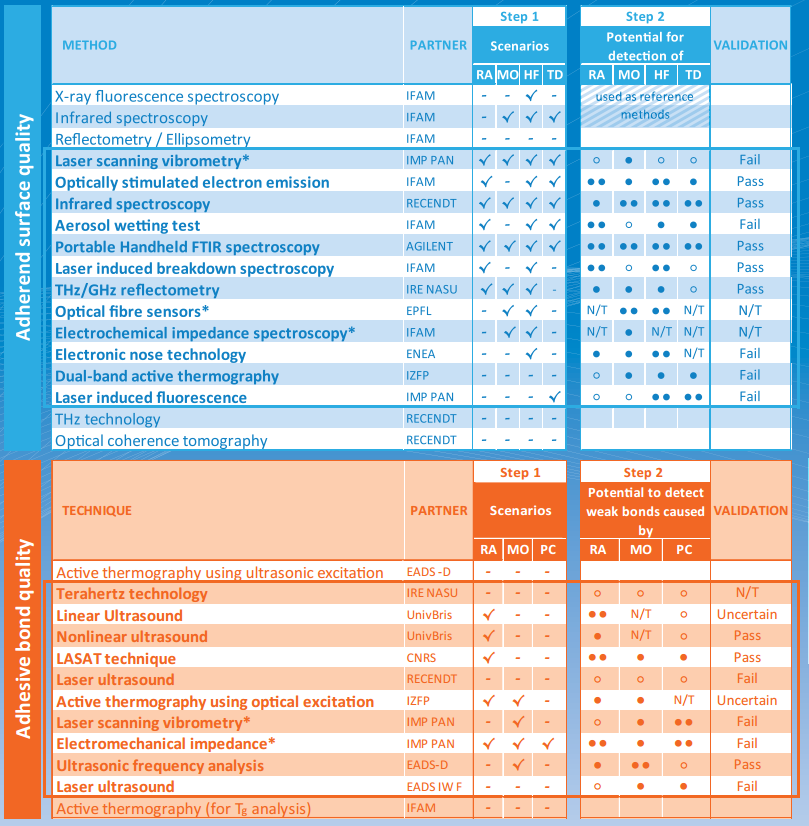The project was organized in four work packages:
-
In WP1, the application scenarios for adhesive bonding of composite structures along with technology requirements were defined;
-
In WP2, test specimens were prepared and contaminated/degradated;
-
In WP3 ENDT methods were developed for the characterisation of adhesives and adherend surfaces;
-
In WP4, ENDT methods for adhesive bond characterization were developed.
Pre- and post-bond quality assessment has been based on the characterisation of adherend surfaces and adhesive bonds. In order to achieve this high, quality samples have been manufactured following strict requirements regarding raw materials, manufacturing and bonding processes to ensure minimal deviation in terms of quality of the samples and so as to enhance the reliability of the developments. The adherend surfaces and adhesively bonded samples have been characterised with conventional laboratory analysis methods and conventional NDT techniques. Extensive mechanical tests have been performed on the bonded samples, in order to determine the influence of sample treatment on their mechanical performance.
The development, adaptation and validation of ENDT technologies for the detection of the selected physico-chemical properties of CFRP adherend surfaces and characterisation of the quality of the adhesive bonds has been carried out in two steps. The first step comprised a comparison of treated samples with a clean reference, as a screening for principal suitability. The second step has been dedicated to the optimization of those technologies with demonstrated suitability by means of samples with different contamination levels down to threshold levels of insignificant impact on bond strength.

In summary, 31 technologies have been investigated and developed. For each of the application scenarios examined, several techniques have been developed and validated to detect different contamination levels. Furthermore, several techniques have been developed with good potential to comply with the requirements after further development effort.
More specifically, 19 extended NDT methods for pre-bond surface quality assurance have been tested and optimized. Up to 10 of them have been developed to reliably detect individual common contaminants down to critical threshold values. 12 extended NDT methods have been investigated and optimized for weak bond detection. Weak bonds due to pre-bond release agent or moisture contaminations have been detected by 6 technologies, poorly cured bonds by 4.
A validation step concluded the ENCOMB developments and has been passed by 5 of the surface-sensitive ENDT methods and by 3 of the bond quality assessment techniques.
A detailed overview of the developed methods is provided at the project’s YouTube channel, which can be accessed here.
